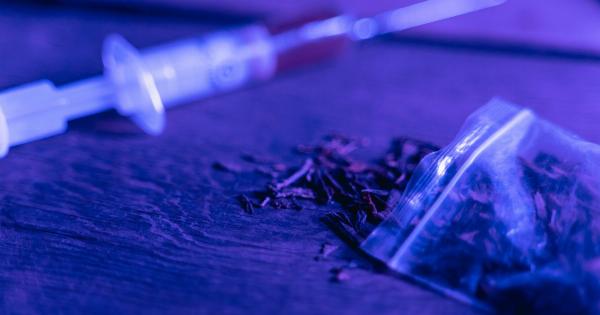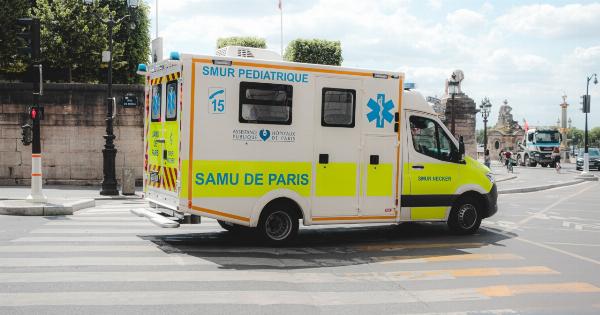Leukemia is a type of cancer that affects the bone marrow and blood cells. It is characterized by the rapid production of abnormal cells, which hinder the healthy functioning of the body.
Acute leukemia refers to a group of aggressive blood cancers that progress rapidly and require immediate treatment. Within the category of acute leukemia, there are various subtypes, each with unique characteristics and treatment approaches.
Understanding the differences between these 11 types of acute leukemia is crucial for accurate diagnosis and appropriate management.
1. Acute Lymphoblastic Leukemia (ALL)
ALL is the most common type of leukemia in children but can also affect adults. It occurs when abnormal lymphoblasts, a type of white blood cell, multiply rapidly, crowding out the healthy cells.
Symptoms may include fatigue, frequent infections, pale skin, and easy bruising. Treatment options include chemotherapy, radiation therapy, targeted therapy, and stem cell transplantation.
2. Acute Myeloid Leukemia (AML)
AML is a type of leukemia that affects myeloid cells, which give rise to red blood cells, white blood cells, and platelets. It is more common in adults than children.
Symptoms can vary and may include fatigue, shortness of breath, joint pain, and frequent infections. Treatment options include chemotherapy, targeted therapy, stem cell transplantation, and, in some cases, clinical trials for new drugs.
3. Acute Promyelocytic Leukemia (APL)
APL is a subtype of AML characterized by the presence of a genetic abnormality known as the PML-RARA fusion gene. This gene mutation causes an excessive production of immature promyelocytes.
APL is considered a medical emergency as it can cause severe bleeding and clotting problems. Treatment typically involves all-trans retinoic acid (ATRA), a drug that has significantly improved the prognosis of APL.
4. Acute Megakaryoblastic Leukemia (AMKL)
AMKL is a rare subtype of AML that primarily affects infants and children. It arises from the abnormal proliferation of megakaryoblasts, cells responsible for the production of platelets.
Symptoms may include fatigue, weakness, infections, and easy bruising or bleeding. Treatment options include chemotherapy, stem cell transplantation, and targeted therapies aimed at specific gene mutations.
5. Acute Erythroid Leukemia (AEL)
AEL is a subtype of AML characterized by the abnormal proliferation of erythroblasts, the precursors to red blood cells. It is a rare form of leukemia and can be difficult to diagnose.
Symptoms can include fatigue, weakness, shortness of breath, and pale skin. Treatment may involve chemotherapy, targeted therapy, and supportive care such as blood transfusions.
6. Acute Basophilic Leukemia
Acute basophilic leukemia is an extremely rare and aggressive form of acute leukemia. It occurs when the bone marrow produces an excessive number of basophils, a type of white blood cell.
Symptoms may include fatigue, weakness, fever, and enlarged lymph nodes. Treatment options for this rare subtype are limited, and prognosis is generally poor.
7. Acute Monoblastic/Monocytic Leukemia
This subtype of AML involves the abnormal proliferation of monoblasts and monocytes, which are types of white blood cells responsible for fighting infections. Symptoms can include fatigue, fever, recurrent infections, and gum swelling or bleeding.
Treatment options may include chemotherapy, radiation therapy, and stem cell transplantation.
8. Acute Lymphoblastic Leukemia with Philadelphia Chromosome (Ph+ ALL)
Ph+ ALL is a specific subtype of ALL characterized by the presence of the Philadelphia chromosome. This genetic abnormality results in the fusion of two genes, leading to uncontrolled growth of white blood cells.
Symptoms are similar to those of other types of ALL. Treatment often involves targeted therapy, chemotherapy, and stem cell transplantation.
9. Acute Biphenotypic Leukemia (ABL)
ABL is a rare form of leukemia that exhibits features of both lymphoblastic and myeloid cells. It is challenging to diagnose and categorize, making treatment decisions more complex. Symptoms may vary depending on the cell types involved.
Treatment options include chemotherapy, stem cell transplantation, and targeted therapy.
10. Mixed Phenotype Acute Leukemia (MPAL)
MPAL is another rare form of leukemia characterized by the presence of both myeloid and lymphoid markers on leukemic cells. It can be further classified into either B/myeloid or T/myeloid subtypes.
Symptoms and treatment options may vary depending on the specific cell types involved. Treatment typically includes chemotherapy and stem cell transplantation.
11. Acute Undifferentiated Leukemia
Acute undifferentiated leukemia is a term used to describe cases in which the leukemia cells do not exhibit specific markers indicating their lineage. The diagnosis is usually made based on exclusion of other subtypes.
Treatment options may include chemotherapy, radiation therapy, and stem cell transplantation.





























